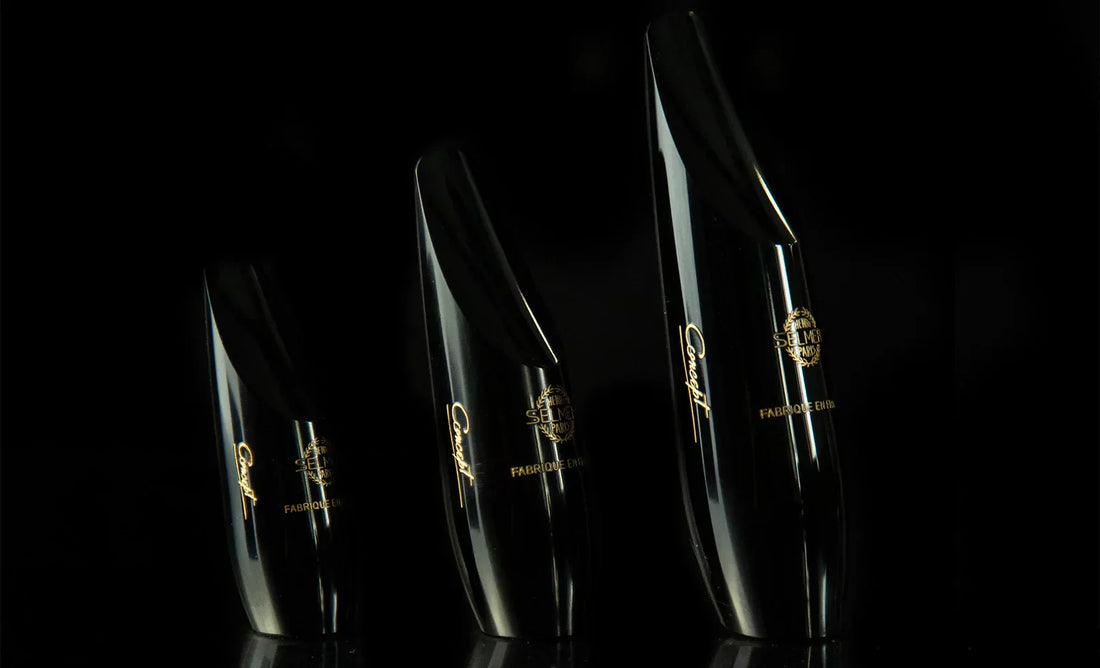How to select a mouthpiece

Select your saxophone & clarinet mouthpieces
The dimensions of the various parts vary from one model to another and their combination makes it possible to obtain very different designs and produce quite different acoustic results. There is a direct relationship between the physical characteristics of the mouthpiece (chamber, baffle, bore, facing length and tip opening) and its musical and acoustic components (sonority, roundness, volume, purity and ease of blowing).

Any minor variation in the size of these structures can produce quite different results! Accordingly, there is no such thing as a universal mouthpiece. This makes the choice of a mouthpiece very personal as each musician must take into account his or her own objectives and physical characteristics (mouth muscles, oral cavity, teeth and lip shapes). This is why it is important to offer multiple combinations.
How to select a mouthpiece
When selecting a mouthpiece, it is necessary to take into account both the musician and the instrument. Although seemingly simple in shape, the mouthpiece is actually quite complex and crucial to getting good results. Poor sound is sometimes blamed on the instrument when an improper mouthpiece is really at fault. Also, a good mouthpiece can noticeably improve any instrument’s sound.

The relationship between the chamber, baffle, bore, facing length and tip opening subtly affects musical and acoustical characteristics – sonority, fullness, volume, accuracy of pitch, and response. Any variation – no matter how minor – will produce quite different results.
A mouthpiece varies as each musician varies : selecting the right one depends on the desired musical results, the player’s embouchure, and the instrument. A bad combination of mouthpiece bore and clarinet bore or saxophone mouthpipe could spoil pitch accuracy, tone quality, and response.
Players should not always choose the easiest-playing mouthpiece. A better choice is one that allows total control of reed vibrations and may offer some resistance.
Table openings and length : infinite combinations...
The table opening is the distance between the tip of the reed and the tip of the mouthpiece.
- The larger the distance (open mouthpiece), the more powerful - but difficult to control - the mouthpiece will be.
- The smaller the distance (closed mouthpiece), the easier the mouthpiece will be to control.
The table length is the distance between the tip of the mouthpiece and the point on the table where the reed makes contact.
- The longer the table length, the rounder the sound.
- The shorter the table length, the more precise the attack

Each mouthpiece series in the Henri SELMER Paris line corresponds to a different sound aesthetic, more or less timbered. Despite constantly changing trends and musicians looking for their own individual sound, universal parameters exist which must also be taken into account related to the morphology and playing style of different players. This is why Henri SELMER Paris offers a multiplicity of openings that have a considerable effect on playing comfort and ease of blowing.
The more closed a mouthpiece, the easier it is to control. Hence, the popular models, often recommended for students, are relatively closed mouthpieces, like the C* or the 170 for the S90 (saxophone) series or the 120 for the C85 (clarinet) series. It must also be noted that certain mouthpieces are more or less easy to play for the same opening size, from one series to another.
To help you choose the mouthpiece that's right for you, we've developed an intuitive tool that will recommend a mouthpiece in harmony with your musical ambitions.
► Discover the whole range of Henri SELMER Paris mouthpieces
